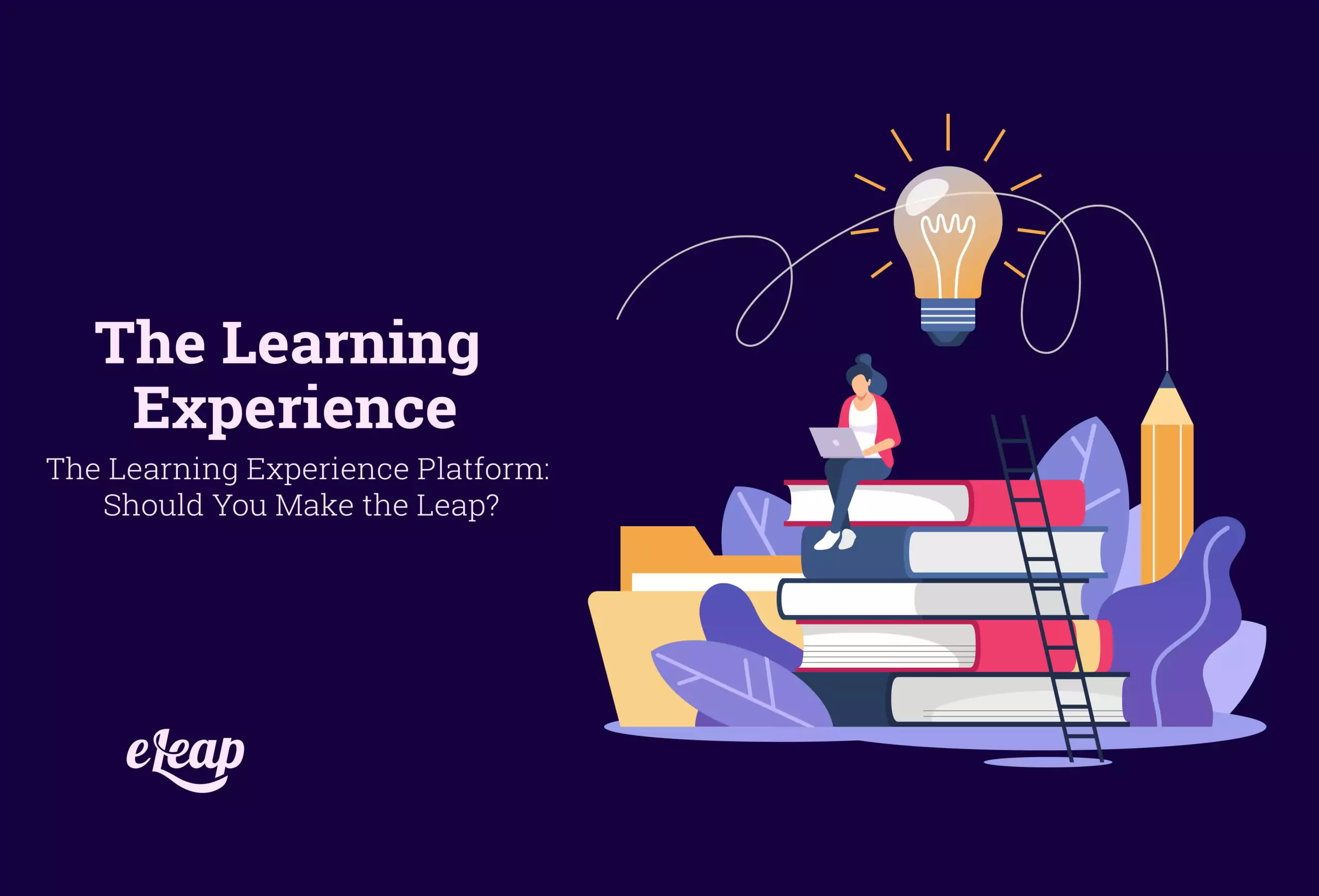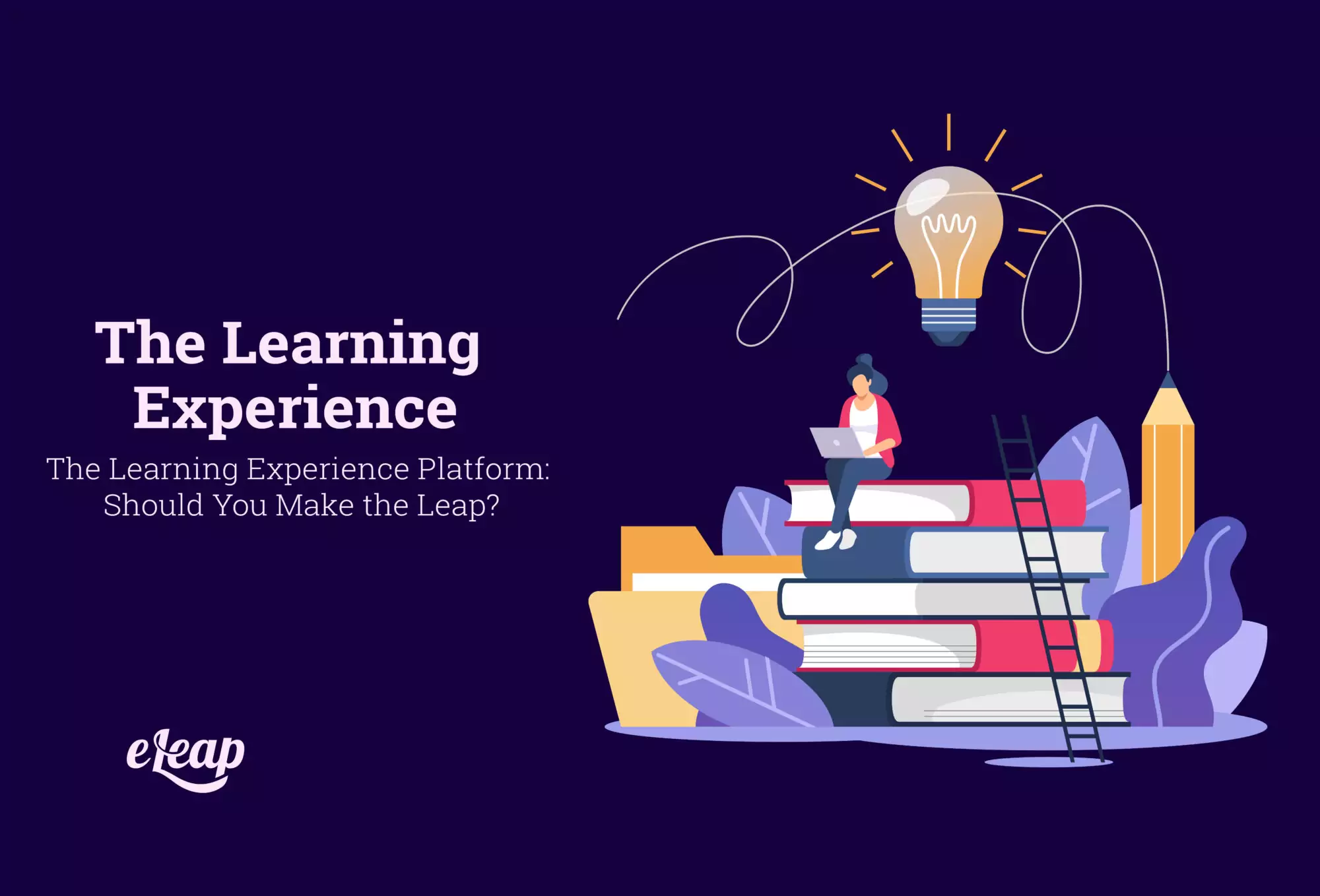The Learning Experience
The Learning Experience Platform: Should You Make the Leap?

One of the key drivers of education in the workplace is the right learning management system. These technology-based systems have given organizations a way to offer and track education for all their employees. But as modern workforces change and technology improves, these systems are developing a new form: the learning experience platform.
What is the learning experience platform, and is this something your organization should embrace? Here are the things you need to know.

What is the Learning Experience Platform?
The learning experience platform (LXP) is software that allows access to a library of different content from different resources. Think of it as a streaming service, such as Netflix, but for educational material on a specific topic or skill.
Do you want to learn to code? An LXP would offer you access to dozens or hundreds of videos, written coursework, and other materials, from many different sources, all about coding. In other words, you can think of an LXP as a content aggregator for learners.
How Does a Learning Experience Platform Differ from Other Systems?
Traditional learning management systems (LMS) are what is known as a closed system. That means that all the content available in the system is part of a pre-determined curriculum. Everything was written or developed by the creators of that system. The most significant difference between an LMS and an LXP is the ability to access outside materials.
However, there are some other differences, such as:
- The learning experience platform is designed around the learner’s desires, with all content typically available right away. The learning management system is generally designed with the administrator in mind first, allowing careful tracking of the learner’s progress through stages of material.
- LXPs are often easier or more intuitive to use, whereas some LMSs can require a bit of a learning curve.
- LMSs allow for the security of a closed system, whereas LXPs work best on an open platform.
In other words, the learning experience platform provides a library of curated content that is easy to use for the learner on the cloud. The learning management system is a closed system of vetted training content that is used to help develop skills with a single curriculum.
Workflow and “Microlearning”
One of the reasons that LXPs have become such a hot topic is because they are perfectly suited to leaning into individual workflows. As modern organizations have embraced the hybrid workforce, the concept of workflow has become increasingly important.
The learning experience platform allows employees to learn when and how it suits them and their workflow best. Better workflow for each employee leads to better productivity overall.
Another essential point to make about the LXP is that it allows for “microlearning”. This means that employees can take just a few minutes out of their day to learn one new concept, ask one question from a social forum, or solve just one problem before moving on to other things. In a structured learning environment, these short bursts of learning would not be possible.
The Benefits of a Learning Experience Platform
With that understanding of the difference, why would you want to make the change to a learning experience platform? After all, isn’t it best to control the materials that employees are learning? Here are some of the benefits of an LXP:
- You can totally customize the learning objectives and methods for each user. This means that each employee can learn in the way that best suits them and doesn’t have to waste time with the material they don’t need for their role or experience level.
- You can go beyond the essential technical skills with an LXP. It’s easy to cover soft skills, cross-training, and leadership development in an open system.
- You can more easily connect your hybrid or virtual office. The LXP isn’t bound by the organization’s servers.
- Some LXPs even offer mobile apps so that your employees can be learning on the go. This is great for organizations with employees that frequently travel for their role.
- You can give access to diverse training with many experts from around the world without paying more to hire those experts.
- Most LXPs offer advanced reporting so that you can see where your team is growing in strength and skills and what areas need to be addressed.
The Drawbacks of a Learning Experience Platform
But, as with any type of training system, there are a few drawbacks to using the learning experience platform.
- Because an LXP is an open library of outside resources, you can never be sure that all the information taught is uniform. For example, if you need to train employees on a legally mandated safety topic, this may not be the best way to provide that information.
- Some LXPs may be confusing or hard to navigate due to the sheer amount of information they offer.
- LXPs may be more expensive than learning management systems. LXPs usually charge based on the number of users rather than a flat rate for an entire organization. There may be hidden costs as well, such as upcharges to access specific “premium” classes.
- Finally, LXPs don’t typically support a structured training journey. This is not the best tool if you need to have employees gain skills via a structured method, where knowledge builds upon itself to avoid accidents or increase uniformity.
What If You Already Have a Learning Management System?
If you already have an LMS in place, you’re probably still on the fence about the learning experience platform. The main question to ask yourself is: do you want to offer your team a more personalized learning experience that empowers them to meet their own needs? Or do you need to have a more structured LMS that ensures safety and uniformity of knowledge?
The truth is that for many organizations, a combination of both may be what is ultimately necessary. You don’t have to choose only one, and the best answer for your office could be a mixture of both.